Top > Echizen Ono Castle
Echizen Ono Castle
Outline of Ono City
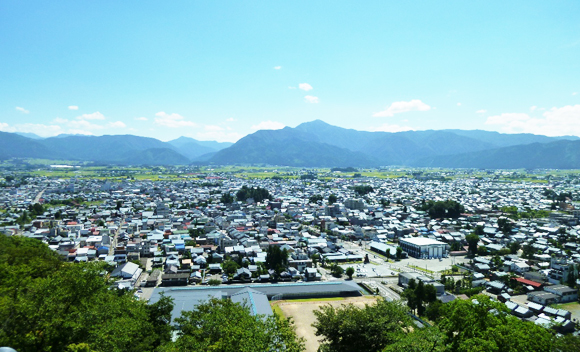
<View from the castle tower (East)>
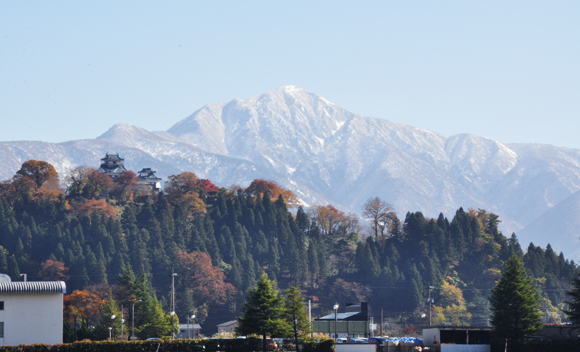
<Arashimadake>
Ono City, Fukui Prefecture: A castle town with rich nature and 400-years of history
Ono City, Fukui Prefecture is a castle town located in the Hokuriku region with more than 400-years of history. This town still holds a strong image of a castle town and it is well-known as “Little Kyoto.”
Ono City is surrounded by a magnificent natural environment. It has many mountains including “Arashimadake,” one of the selected “one hundred exquisite mountains of Japan.” Ono City has also been selected as one of the “one hundred exquisite towns with water wells in Japan” designated by the National Land Agency because the city has famous spring water, “Oshozu,” which was selected as one of the “one hundred exquisite waters of Japan.” Ono City’s impressive old scenery and its rich nature is also known as “Yui no Kuni.”
The word “yui” represents a custom of people helping each other with farm work, forestry, events,and rituals in traditional rural villages. It also stands for Ono having played an important role in connecting and economically helping activate local areas. In this way, Echizen Ono is a homeland gradually bonding lives and areas filled with yui.
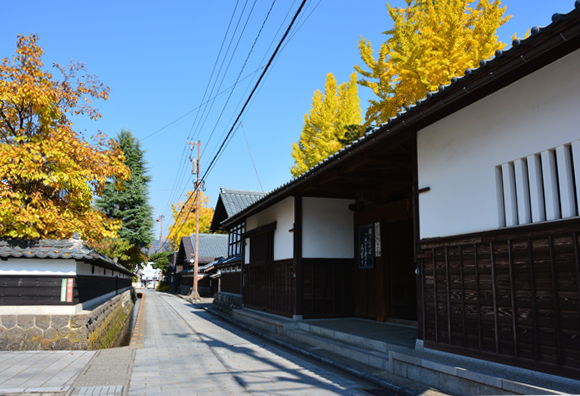
<Temple town>
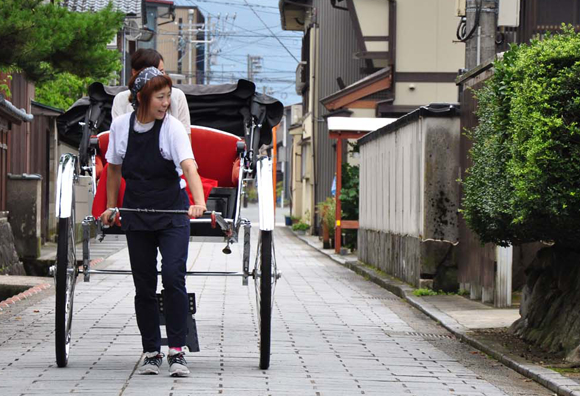
<Pulled rickshaw>
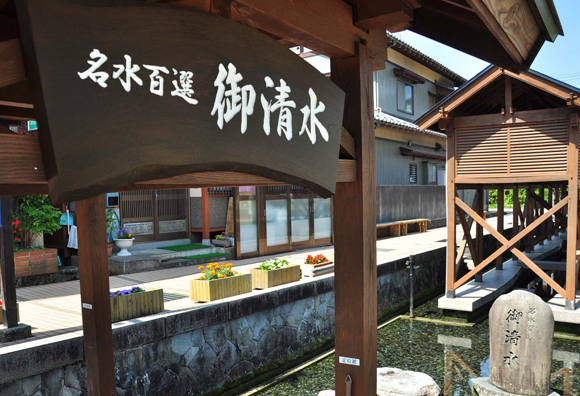
<Oshozu>
Castle

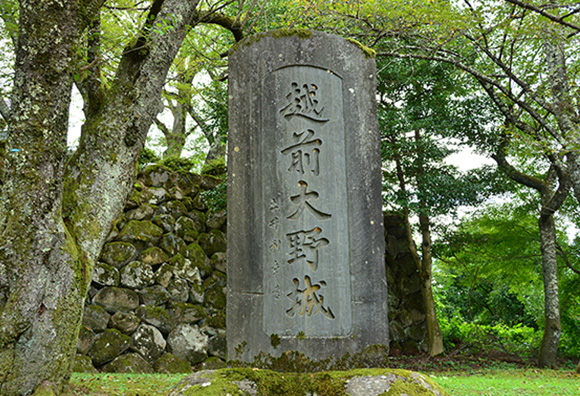
What is Echizen Ono Castle?
Echizen Ono Castle is categorized as “Hirayamajiro” castle. This castle was built at Kameyama with an elevation of about 249m (817ft), in the Ono basin located northwest of Ono City. Nobunaga Oda gave two thirds of the land of Ono-gun to Nagachika Kanamori. Kanamori built this castle around 1575, one year before Azuchi Castle (built by Nobunaga Oda) was completed. It took five years to complete this project. The stone wall as the base of this castle was built by the “Nozurazumi” method, which is the piling of natural stones upon each other one by one.
The current castle tower was built in 1968 in reference to pictures, drawings, and other contemporary castles. A large number of articles left behind by the successive lords were displayed within the castle.
![Stone wall (musha-bashiri [running warrior passage])](../../images/about/outline/pic_thum08_en.jpg)
<Stone wall (musha-bashiri [running warrior passage])>
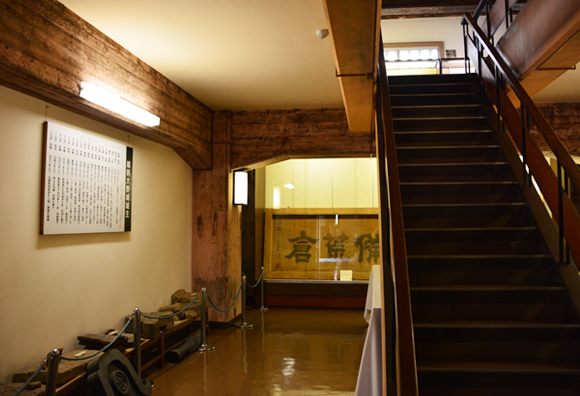
<A picture of the interior of the castle>

<Hasamibako (a lacquered box carried in a daimyo's procession)>
∗Reproduction Prohibited
History
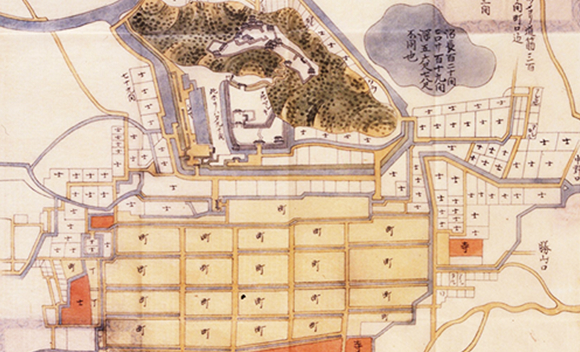
<Old map of Ono Castle>
There were 19 people who served as lord of Echizen Ono Castle until it was disposed of in the meiji period (1868-1912). During the Azuchi Momoyama period (from the late 16th century to the beginning of the 17th century), prominent people such as Kazunori Aoki, Hidekatsu Oda, and Nagachika Kanamori served as lords of the castle. Kazunori Aoki was said to be a clan member of Hideyoshi Toyotomi. Hidekatsu Oda was the grandson of Nobunaga Oda.
In the Edo period (from the beginning of the 17th century to the mid-19th century), Ono became part of the Fukui domain. Masaaki Tsuchiya, a powerful vassal of Hideyasu Yuki (later his name was changed to Hideyasu Matsudaira) and the feudal lord of the Fukui domain, served as the lord of the castle. Although Masaaki Tsuchiya was Hideyasu Yuki’s vassal, his kokudaka (the revenue from the domain) was 38,000 koku (worth about 5,700 tons of rice), which was as large as those of smaller feudal domains. Tsuchiya was a great man
When Naomasa Matsudaira, Hideyasu Yuki’s son, became lord of the castle in 1624, the kokudaka that the Ono domain earned increased to 50,000 koku (worth about 7,500 tons of rice). Later, Naomasa Matsudaira became lord of the Shinano-Matsumoto domain (the currentty Matsumoto City, Nagano Prefecture) for 70,000 koku (worth about 10,500 tons of rice). Then lord of Izumo-Matsue (the currentty Matsue City, Shimane Prefecture) for 180,000 koku (worth about 27,000 tons of rice).
In 1682, Toshifusa Doi, son of Toshikatsu Doi who was “Tairo” (provisionally-appointed prime minister in the Edo period) became lord of Ono Castle. Since then, eight people from the Doi Family have served as lord of the castle for around 180 years until the end of the Edo period.
Finally, in 1872, the castle was sold to more than 20 people, including merchants, which marked the end of the 290-year history of Echizen Ono Castle.
First lord of the castle: Nagachika Kanamori
In 1575, Nobunaga Oda ordered Nagachika Kanamori and Masashige Hara, another samurai lord, to rule Ono-gun, which had been ruled by monks of Jodo Shinshu, a sect of Buddhism, and local peasant farmers rising up against the samurai rule. It is said that Kanamori received two-thirds and that Hara received one-third of Ono-gun. Kanamori began to build a “Hirayamajiro” castle on Kameyama and a castle town in a rectangle manner towards the east of the castle. This castle town became called “Little Kyoto in Hokuriku” because of its shape.
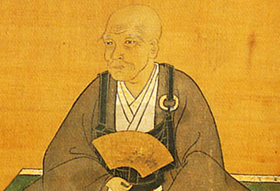
<Nagachika Kanamori>
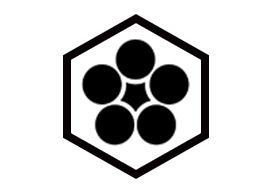
<Kanamori family crest>
Wise ruler at the end of the Edo period: Toshitada Doi
Toshitada Doi was born in Edo in 1811. He took over as the head of the Doi Family at the age of eight and came to Ono as lord of the domain at the age of 19 in 1829. Because the domain faced severe financial problems, Toshitada Doi began to implement “Koshi no Rei” (an order of political reforms of the domain) in 1842, primarily to rebuild the domain economy and to select talented people for higher positions.
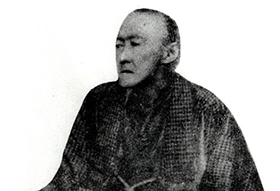
<Toshitada Doi>
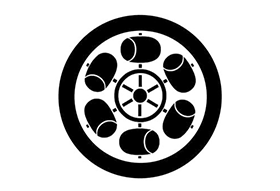
<Doi family crest>

<Fubako (a box to hold letters)>
∗Reproduction Prohibited

<Alembic>
∗Reproduction Prohibited

<Doi family armor>
∗Reproduction Prohibited
Little Kyoto
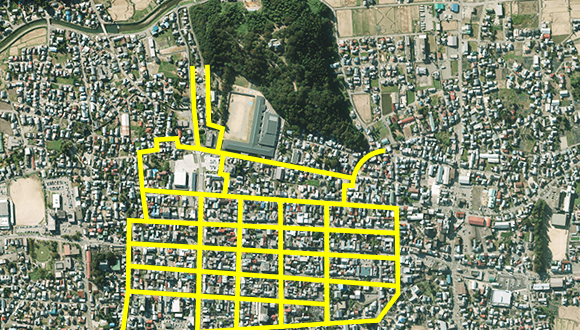
<Castle town (aerial photograph)>
Castle town of Ono, Little Kyoto
Ono was prosperous as a transportation hub connecting two areas: Echizen and Mino. In 1575, Nagachika Kanamori became the ruler over most of Ono because of his distinguished services in war. He was a member of Nobunaga Oda’s early bodyguards called “Koshoshu/Akahoroshu.” Nagachika Kanamori began to build a castle at Kameyama and a castle town in a rectangle manner similar to Kyoto. This castle town was called “Little Kyoto in Hokuriku” because of its shape. This castle town became the origin of the current urban area. Since then, Ono has been a prosperous main city of Okuechizen for about 430 years.
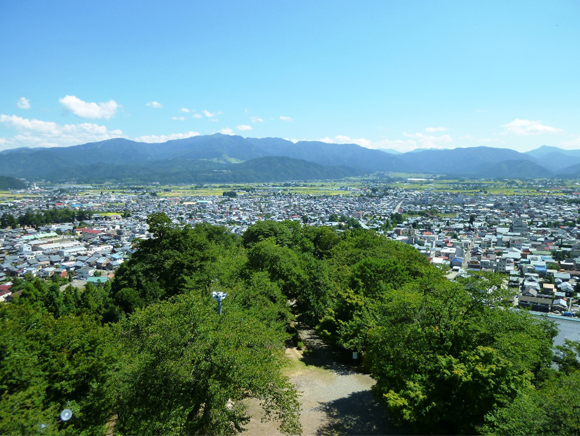
<View from the castle tower (North)>
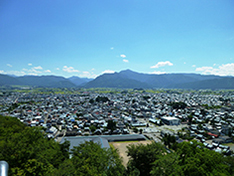
<View from the castle tower (East)>
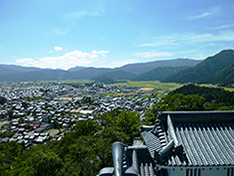
<View from the castle tower (South)>










